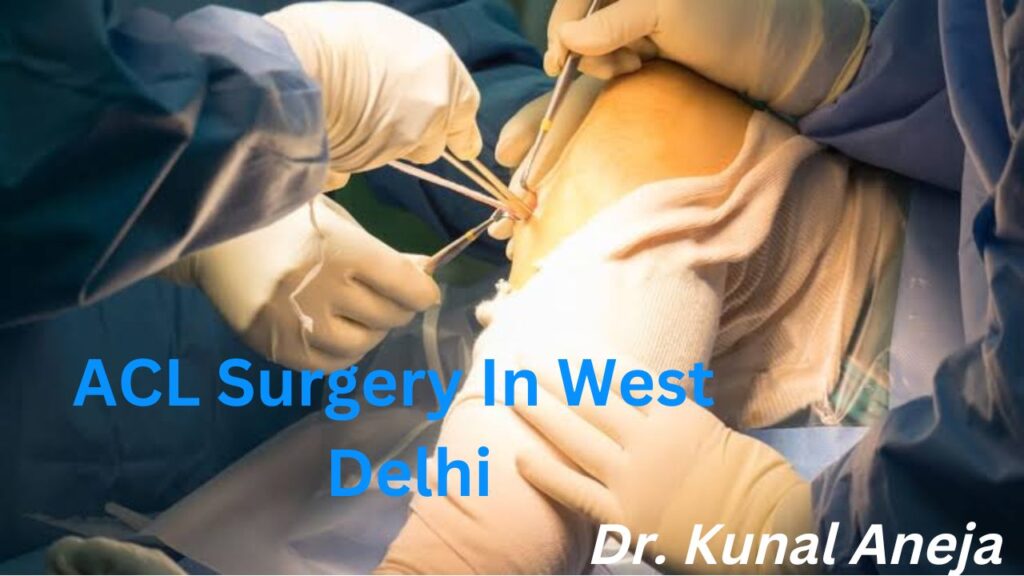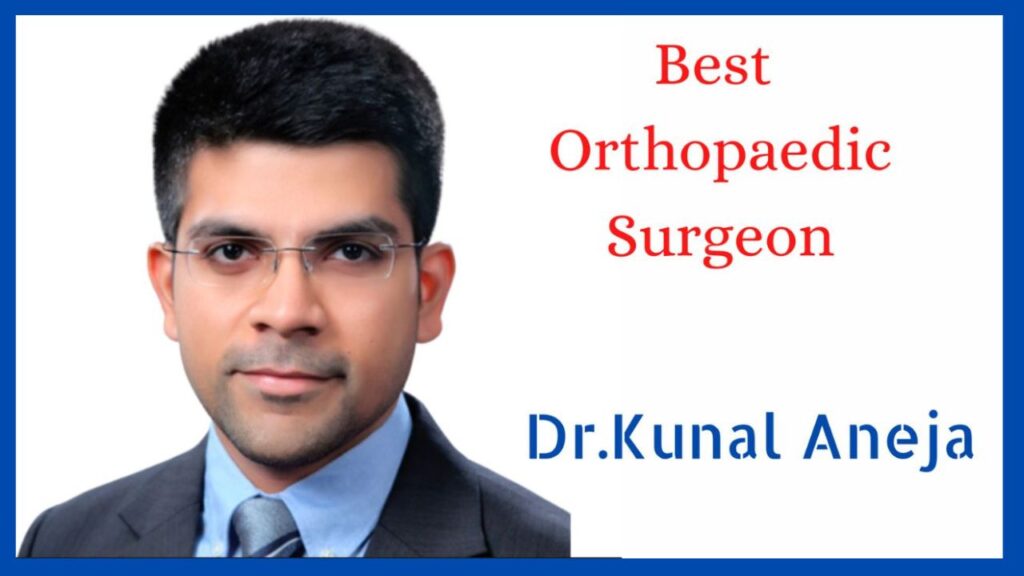
The surgery of the ACL
In ACL surgery In West Delhi, the anterior cruciate ligament (ACL) is repaired or recreated in order to maintain the integrity of the knee. It is a soft tissue connecting the femur to the tibia. A torn ACL is one of the most common injuries among athletes, whether they are partially or completely torn. As a general rule, sports medicine physicians and orthopedic surgeons treat complete ACL tears with ACL reconstruction surgery, in which the torn ligament is replaced with a tissue graft, which mimics the natural ligament. In HSS, we take an interdisciplinary approach to treating ACL injuries, which means our doctors collaborate with other professionals, such as radiology, physiotherapy, rehabilitation specialists and sports medicine specialists to determine the best treatment option for each individual patient. HSS physicians and scientists carry out continual research into the effectiveness of different ACL surgery techniques in order to improve the chances of patients having successful short-term and long-term outcomes after undergoing ACL surgery. Patients with ACL injuries are also more likely than those without to develop osteoarthritis of the knee when they are younger.
The timing of reconstruction surgery is determined by:
- It is important to find out if there are any other injuries that need to be treated before this injury can be treated
- Physical appearance of the knee is one of the most important factors to consider
- Symptoms of pain experienced by the patient
- Extending (straightening) or bending the leg with good muscle control in the patient
There is some evidence to suggest that delaying ACL reconstruction surgery for six months or longer after injury increases the risk of a person having a clinically significant outcome and increases the likelihood of the individual needing subsequent revision surgeries back in the future.
Besides being important for walking, standing, and running, the knees tolerate a large amount of body weight as well. Anterior Cruciate Ligament (ACL) is one of the most important ligaments that help keep the knee joint stable. From the thigh bones to the shin bones, it runs through the center of the joint.
ACLs can be damaged from direct blows, indirect twists, or even overuse if they are not properly maintained. It has been shown that the majority of ACL tears occur when the knee is suddenly stopped when the force of movement is decelerating or when the sudden change in direction of movement happens suddenly. In this situation, the person may experience a sudden popping sensation and intense swelling can be observed on the site. If you are searching for the best ACL surgeon in Delhi, then you should consult Dr. Kunal Aneja.
It is with high-tech tools and advanced technology that he provides his patients with the best diagnosis and treatment possible. He has completed a specialization in knee, shoulder, and sports injuries.
Treatment options for ACL injury
There are many treatment options to heal this problem, but the right method is suggested after a complete diagnosis has been made and a thorough examination has been performed to determine the extent of the damage. Physical therapy, anti-inflammatory medication, or both may be advised for acute ACL injuries, but surgery may be needed to restore range of motion.
ACL surgery is the only treatment method when the ligament is completely torn, and a post-surgery rehabilitation program must be followed after the surgery if the ligament is completely torn. Hence, this decision is dependent on the radiological and clinical MRI reports. An ACL surgery will be very beneficial to the patient so that they can get back on their feet without pain and it will also improve their functional anatomy.
What is an ACL surgery?
Basically, it is a method of reconstructing the anterior cruciate ligament (ACL) in the knee joint. By doing this, the ACL is restored from a damaged state and is a supporting and vital ligament within the knee joint. In order to perform this procedure, it is necessary to remove the damaged ligament and place a piece of tendon from a different knee on the site. In order to complete the procedure, a few small incisions need to be made near the knee joint. This procedure is only performed by an experienced and specialized ACL surgeon. A tunnel or socket will be drilled into the patient’s shin as well as his or her thigh bone so that the graft can be positioned. With the aid of fixation devices such as screws, this graft is then secured in the bones. As a result, new ligaments will grow over the graft, which will serve as its primary support. You may need to undergo physical therapy for several weeks before you undergo this surgery in order to reduce pain and swelling, and strengthen your muscles.
Treatment procedure after ACL surgery
Following a short period of observation, the patient may be discharged after wearing some ortho-devices such as knee braces to help support the knee joint & protect the graft. The swelling may be reduced or prevented with some medication or therapy. It is recommended that the patient walk with crutches at first. You will also get many tips for recovering from the surgery if you simply follow them.
If you are experiencing any medical problems during this period, speak with your surgeon. Make sure you have adequate rest and sleep during this period. Also, follow your surgeon’s instructions strictly.
Delhi NCR’s best ACL surgeon shares tips to prevent ACL injury
In case you want a personalized consultation with Dr. Kunal Aneja, then book an appointment. He will be glad to assist you with injury prevention and rehabilitation.
You should train your knees, hamstrings, and quadriceps every day to increase their strength.
- Maintain a healthy weight by eating a balanced diet
- You should always practice landing like a feather
- Prior to any important match, make sure you get enough rest.
What is the procedure for reconstructing an ACL?
There are two different sources from which one can get replacement tissue for the graft of a new ACL when performing ACL reconstruction surgery:
An individual’s own patellar tendon, hamstring tendon, quadriceps tendon, or hamstring tendon might be used as
Allografts (organs taken from human donors) are considered as an allograft
Each patient’s case is evaluated on a case-by-case basis in order to determine the best type of graft that can be used.
In order to perform minimally invasive ACL reconstruction surgery, fiber optics, small incisions and small instruments are used in conjunction with minimally invasive arthroscopic techniques, which are used to reconstruct the ACL. There is, however, a relatively larger incision required to obtain the tissue graft. An ACL reconstruction is an outpatient (ambulatory) procedure, which allows the patient to return home immediately after surgery.

What is the recovery time for ACL surgery?
In general, athletes should wait six to nine months after an ACL reconstruction before participating in sports again.
Immediately following surgery, the patient begins a rehabilitation program to regain strength, stability, and range of motion in the knee. The process involves a progression of exercises to restore strength, stability and range of motion to the knee.
Early in the recovery process, exercises that strengthen the muscles and improve range of motion are begun.
At about four months of age, the baby begins to engage in running exercises.
Around five months of age, pivoting exercises are introduced.
As soon as six months after surgery, you can begin playing competitive sports again.
As a result of the ACL recovery, the degree of pain can vary widely, and medications can be used effectively to ease that pain. It is also important to note that the duration of recovery varies from patient to patient. When a patient has fully recovered from the injury, it is determined by the restoration of muscle strength, range of motion, and proprioception in the knee joint.
The recovery times for ACL reconstruction have been made shorter and easier by utilizing arthroscopic surgical techniques, as opposed to open surgery, which was used in the past for ACL reconstructions. There is, however, a certain level of difficulty in achieving a successful outcome when a patient is undergoing rehabilitation, which is closely monitored by a physical therapist, and in conjunction with following-up appointments with the surgeon.
content by best healthcare marketing agency

